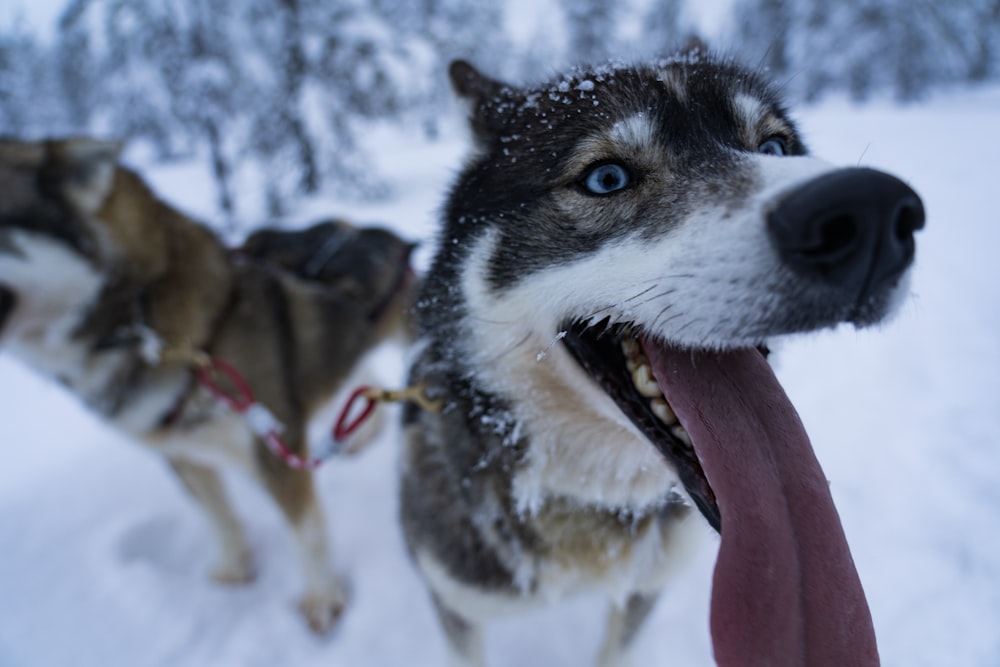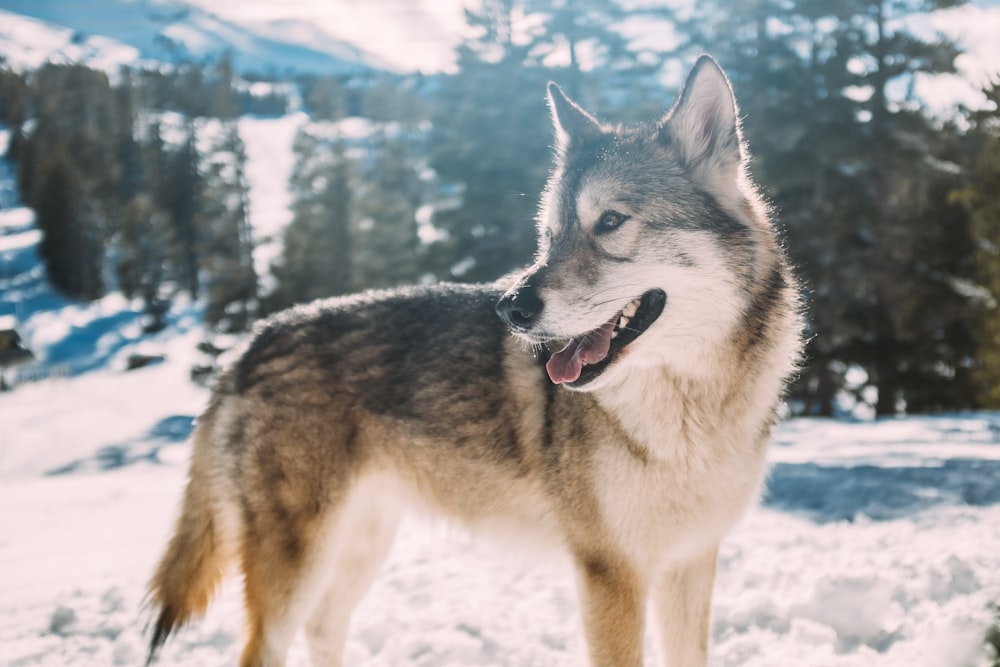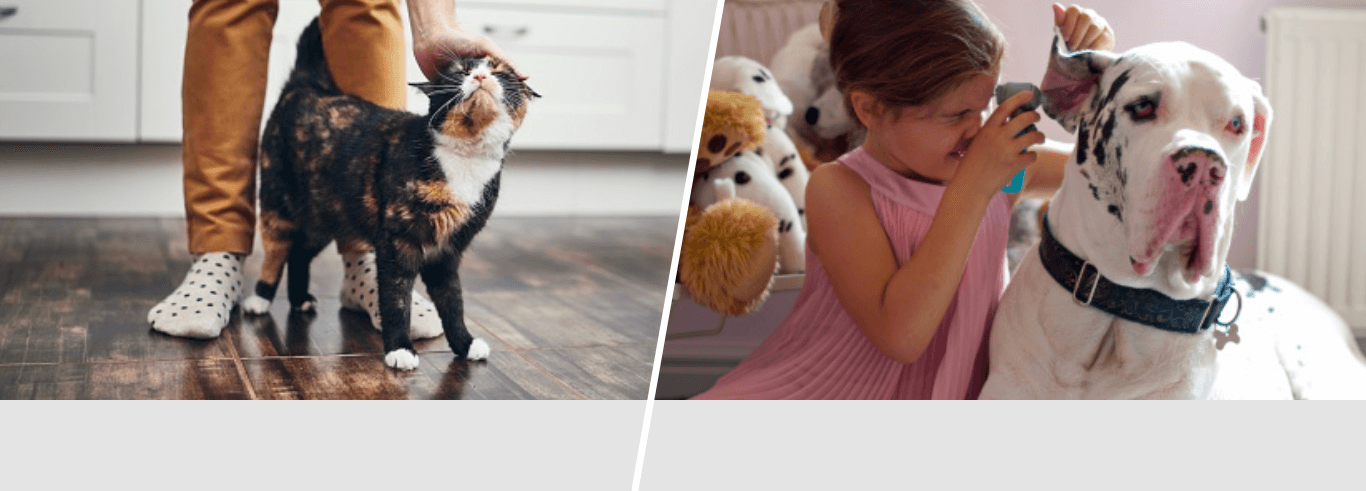Everything you need to know about Siberian Huskies
Like every breed, the Siberian Husky has its own unique history and set of needs. An energetic and challenging breed, there are things you need to consider before you decide to buy or adopt.
From the history of the Siberian Husky to their diet and cost – here’s everything you need to know about the beautiful Siberian Husky.
Siberian Husky fact file
Content provided from Vetstream’s Vetlexicon
| Breed Name | Siberian Husky (Canis lupus familiaris) |
|---|---|
| General Appearance | Wolf-like appearance. Pointed ears, long nose, fluffy coat, long bushy tail |
| Temperament | Athletic, playful and friendly |
| Gait/Movement | Smooth, effortless, quick and light on feet |
| Coat | Double coat, medium in length,soft and dense |
| Colour | There are many colours and markings that include white, black, sable, copper, silver and brown |
| Size | Height 51 cm – 60 cm Weight 20 kg – 27 kg |
| Lifespan | 12 – 15 years |
What is a Siberian Husky?
A Siberian Husky is a medium-sized dog that originates from the tribes of North-East Asia. Originally a working dog, they were primarily used as a guard dog and for sled-pulling. They were bred to run for long distances in harsh conditions, so have a dense coat that often needs grooming and a strong athletic body that requires regular exercise.

How to take care of a Siberian Husky
Siberian Huskies are great for families and owners with active lifestyles. Here’s how to groom, exercise and socialise your dog:
Exercise
Siberian Huskies were originally bred as working dogs meaning they need regular strenuous exercise. This is an animal for an owner with an active lifestyle who is prepared to keep up with their energetic pet.
Bear in mind that these animals love to run, so if you have a large garden give them a chance to stretch their legs but only if you have a fence you’re sure they can’t jump over. Find out more about how you can make your garden dog friendly.
When in public, it’s recommended that you never take them off their lead though, as they have a habit of tireless running – even if there’s a fence in the way. Try a long lead or, if you’re particularly active, why not jog alongside them to really tire them out.
Socialisation
If you don’t exercise your Husky often enough, you’ll soon hear about it. These pack animals are extremely vocal, but they don’t tend to bark like other dogs. Close ancestors to the wolf, they’re more likely to howl to communicate.
Whether your new Husky will be living alongside other pets or not, it is recommended that you buy them from a reputable breeder that has socialised the dog as a puppy. This will help avoid any behavioural problems later in life.
Grooming
While this hardy breed has a self-cleaning coat that will only need bathing a few times a year, their double coat does mean they will require regular grooming. You should also regularly check and clip your dog’s nails to ensure they are comfortable and to avoid any potential health problems.
What’s the best dog food for a Siberian Husky?
With two hours of exercise every day, you’ll need to feed your Husky well to keep their energy levels up. Their nomadic history means these dogs are used to changes in food sources and diet, so try mixing it up with what you offer them.
You should choose foods that are high in quality proteins and low in grain. Grains were not a readily available food source in Siberia, so Siberian Huskies are poorly adapted to digesting the starch in them.
While training your dog, try fish-based treats such as dried salmon – although it’s worth noting that these should only be used occasionally as part of a balanced diet.
How to train a Siberian Husky
Siberian Huskies are an intelligent and independent breed who will react well to a consistent routine and mental stimulation. You should give praise or a tasty treat when your dog is calm in the presence of other dogs and humans. If they get anxious or agitated, you should distract them and take them away from the situation.
Unfortunately, even the tamest huskies have been known to show unpredictable behaviour, such as running off without warning, so no matter how much training you do – always ensure you have your Husky on a leash when you’re outdoors. Roadside safety is important for all dogs, not just Huskies. Check out our 6 roadside tips to help ensure no harm comes to your pooch.

How much is a Siberian Husky?
Siberian Husky price will vary depending on the breeder you use. For Kennel Club registered breeders, you can expect to pay on average £601(1). You should always use reputable, registered breeders where possible, but you may also find huskies available for adoption.
What health problems can a Siberian Husky experience?
Content provided from Vetstream’s Vetlexicon
The Siberian Husky is generally healthy, but there are some health conditions that are common in this breed:
- Hip dysplasia
- Glaucoma
- Cataracts
- Persistent pupillary membrane
Hip dysplasia
Hip dysplasia is a common disorder where the ball-and-socket joint of the hip doesn’t fit together properly. This causes rubbing, which damages the surface of the joint and can lead to arthritis in later life. Affected dogs will be unstable, lame and in pain. Anti-inflammatory drugs will reduce the pain and inflammation, but in some cases, hip replacement surgery is needed.
Glaucoma
Glaucoma refers to increased pressure on the inside of the eye. It causes pain and can lead to blindness if not treated. Signs of the condition include a cloudy and slightly blue eye, tearing, squinting and head shyness. Treatment for Glaucoma aims to reduce the pressure on the eye, this can be achieved by pills, drops, injections or surgery. Dogs with Glaucoma can lead long, happy lives if treated.
Cataracts
Cataracts is a disease of the lens of the eye. The lens is normally clear but with cataracts it will be cloudy or white, causing vision loss. There are several different causes that include diabetes and glaucoma. Affected dogs will be tested to check for causes and other eye diseases. Treatment involves removing the lens from the eye.

Persistent pupillary membrane (PPM)
PPM is an eye condition that involves foetal tissue remaining on the eye after birth. These strands were blood vessels that supplied nutrients to the developing eye. Symptoms include visual impairment, visible strands crossing the pupil, cloudy eye, or abnormal iris movement. There is no treatment for this condition but in most cases, it will resolve naturally.
If you’ve recently added a Siberian Husky to your family unit, you should consider insurance in case anything should happen to them. Check out the Siberian Husky insurance policies from Argos Pet Insurance, provided by Pinnacle Insurance Ltd.
1. https://www.pets4homes.co.uk/dog-breeds/siberian-husky/
 Sorry, our lines are now closed
Sorry, our lines are now closed



